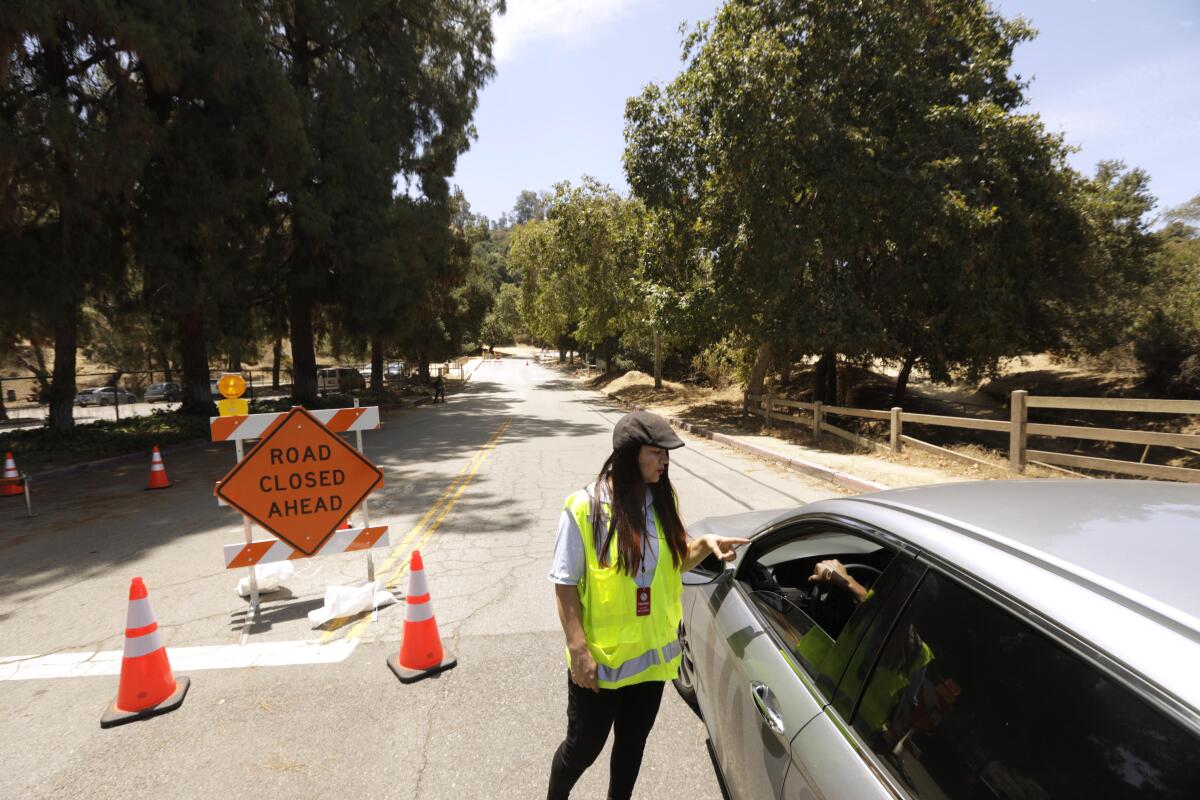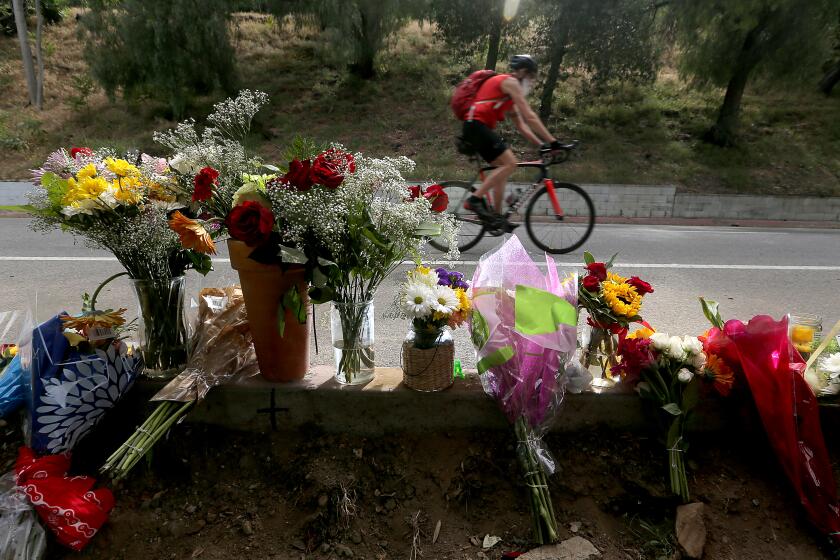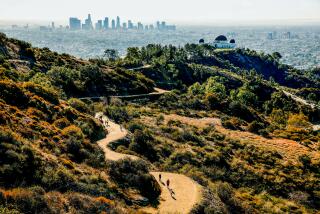Editorial: Griffith Park road closes for good. Hooray! Which streets should be next?

- Share via
That was fast. At the end of June, the city of Los Angeles temporarily banned cars from a segment of Griffith Park Drive to reduce speeding cut-through traffic and protect park users. The test was such a success that the parks department has decided to permanently close the two-thirds-of-a-mile route to vehicles.
Good. Now do it again.
The test showed that Angelenos are ready to embrace car-free streets, particularly when the closures result in safer recreation spaces. The response from park users was overwhelmingly positive, officials said. Now cyclists, equestrians and pedestrians can travel that stretch of Griffith Park without fearing a motorist will come barreling around a corner.
It also demonstrated that L.A. can move quickly and decisively for safer streets. The road closure pilot was launched and completed in a matter of weeks. That is lightning speed for the city, noted Councilmember Nithya Raman, whose office helped drive the effort.
It’s high time that Los Angeles prioritizes Griffith Park users over commuters.
The Department of Recreation and Parks has been working to ease traffic congestion and speeding in Griffith Park for a decade, but there was new momentum for action after cyclist Andrew Jelmert, 77, was killed on Crystal Springs Drive in April. Jelmert was nearing the finish of a 67-mile training ride when he was hit from behind by a driver, who police say was trying to pass another car and may have been drinking.
It helped that the Griffith Park Drive car ban was a relatively easy process compared with what the city would normally go through to close streets. The road is controlled by the parks department, so the decision didn’t require negotiation or approval from other city or regional agencies. It’s a short stretch between the Travel Town Museum and Mt. Hollywood Drive and there are no destinations within the closure area. Prior to the pilot project, about 2,000 vehicles traveled the segment per day, many of which were using the road as a freeway bypass to avoid traffic on Interstate 5 and the 134 Freeway.
One concern was that the closure might increase traffic on other routes within Griffith Park, but that didn’t happen. The number of cars on Zoo Drive declined during the pilot project. Officials think drivers decided to stay on the freeway since they could no longer use Griffith Park Drive as a shortcut. That’s an important lesson: When park roads are prioritized for safety and enjoyment of park users, motorists looking for a speedy route will go elsewhere.
Griffith Park is the ideal test case for road closures — it’s the nation’s largest urban park and too special to be wasted as a freeway bypass. But there are car-free possibilities all over the city. The Department of Transportation has closed some small streets and alleys to create plazas.
The City Council is now considering periodically closing the new Sixth Street Viaduct to create a pedestrian and cyclist space. This makes sense. After the bridge connecting Boyle Heights with downtown opened last month, it immediately became a community gathering place — as well as a speedway. That’s a dangerous mix. And Councilmember Kevin de León, who represents downtown and the Eastside, wants to try converting some streets into “Park Blocks,” modeled after a program in Barcelona, Spain, that closed blocks of streets to through traffic to create shared open spaces. That’s an intriguing idea and could be great in Los Angeles.
Surely there are more streets in city parks and across neighborhoods that could be partially or completely closed to vehicular traffic so people can walk, bike, scoot and enjoy their public spaces. How about stretches of Hollywood Boulevard, which is already being eyed for a pedestrian-friendly makeover? Or other streets in parks and open spaces that have been turned into freeway bypasses — such as in Elysian Park or Franklin Canyon Park? Even closing off a block next to a museum, school or park could make the area feel safer and more inviting.
Where would you like to see car-free streets in your community? Send your suggestions to [email protected] and maybe together we can help build safer streets in every neighborhood.
More to Read
A cure for the common opinion
Get thought-provoking perspectives with our weekly newsletter.
You may occasionally receive promotional content from the Los Angeles Times.











